
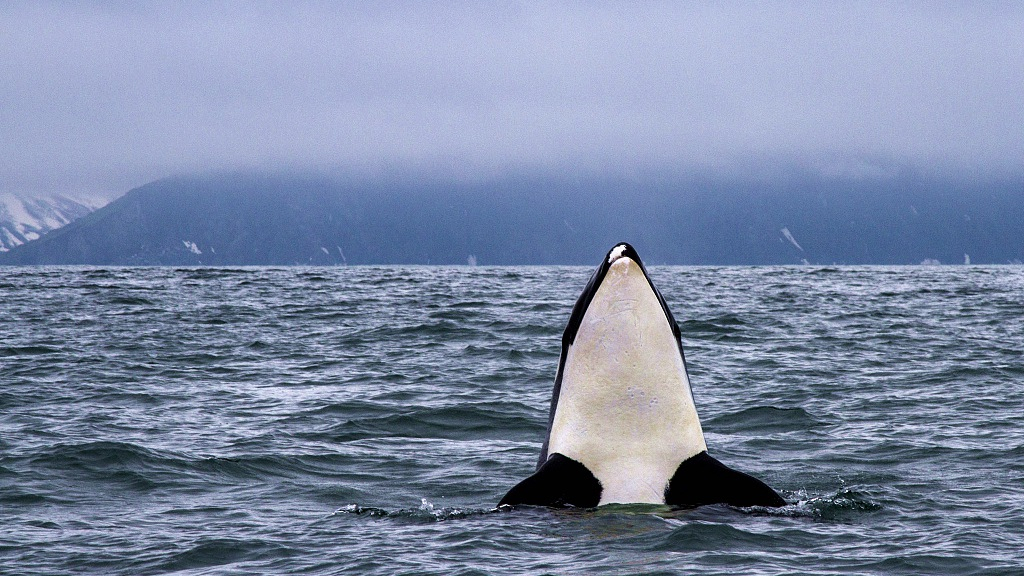
Whales were massaged and lathered in special balm as they rode toward the ocean in a motorcade as part of their release from a "jail" in the Russian far east, the institute overseeing the operation said Thursday.
Two killer whales and six beluga whales were freed last week after months of captivity and a public backlash. President Vladimir Putin was reported to endorse their release.
The animals have been held in cramped enclosures since last summer by commercial firms that planned to deliver them to aquariums.
A further 87 are currently still in the facility nicknamed "whale jail".

An aerial view of the small pools where the killer whales and belugas are kept, in Srednyaya Bay near the city of Nakhodka, Russia's Far East. /VCG Photo
"The hardest thing in the release was that nobody has done this before," said the director of the All-Russian Fisheries and Oceanography Institute (VNIRO), Kirill Kolonchin.
"From the point of view of science, this is a fantastic experience" that will provide information about how the animals behave following an extended period in captivity, he added.
The whales were driven on trucks for 760 kilometers to the river port Khabarovsk before being loaded onto boats for the second leg of the trip.
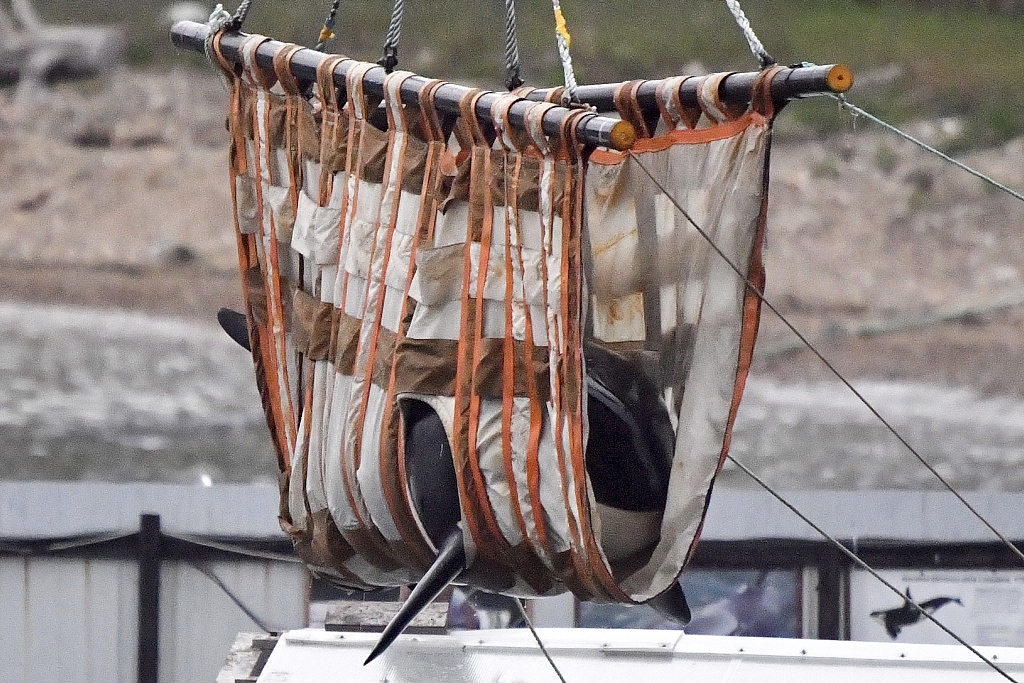
Photo taken on June 20, 2019 shows people preparing an orca in Vladivostok, Russia to be transported to the release site. /VCG Photo
"To smooth out the road journey, we asked traffic police to help and accompany us with flashing lights to prevent stops," Kolonchin said.
"We really worried about killer whales being injured, so two people rode in each tank around the clock, holding the animals to make sure they don't inhale water," he said.
"Special creams were developed to prevent their skin from being damaged, water was changed, we had sea salt and ice that was added to the water," he said.
Before their release into the ocean, "veterinarians and coaches massaged the killer whales, rubbing their tails and flippers for four to six hours," Vyacheslav Bizikov, deputy director of VNIRO, said.
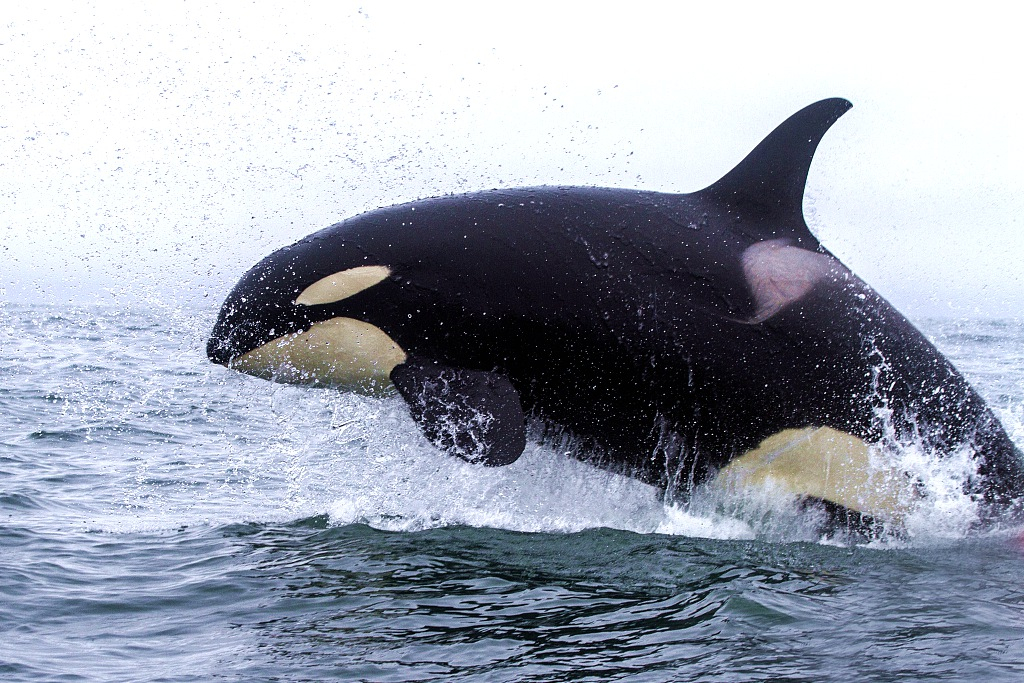
Orca jumping in Pacific ocean. /VCG Photo
Brother, sister bond
The two killer whales were brother and sister who had formed an attachment, and were communicating during the trip, he said.
"Now they are already over 400 kilometres from the release site," he said. Their satellite trackers indicate that "they are searching" for something - perhaps their families.
Bizikov said three to four more killer whales would start their journey to freedom next week.
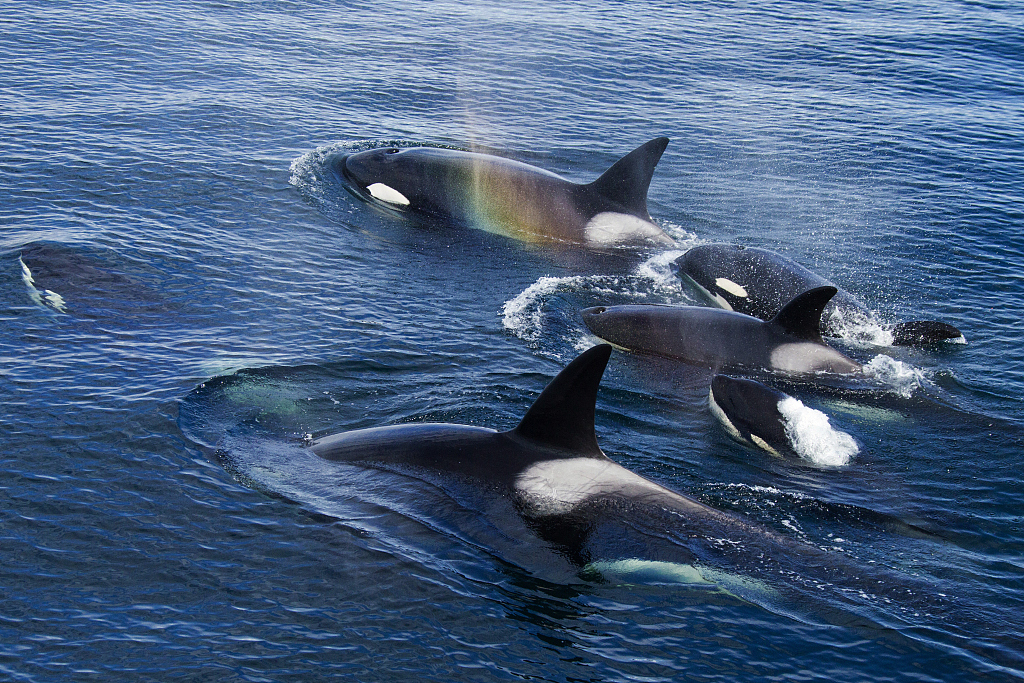
A group of killer whales. /VCG Photo
Many scientists and activists criticised VNIRO for keeping the details of the release secret, not taking any observers on the trip and only freeing a small group of animals rather than all of them together, which would boost their survival odds.
Kolonchin said the institute settled on a solution that delivered the animals to the right location while being affordable, because nobody offered any help.
"We could not release all animals together - we don't have the funds," Bizikov said.
The institute took advice from foreign experts like ocean conservationist Jean-Michel Cousteau, but it had to be "adapted to our Russian reality", he added.
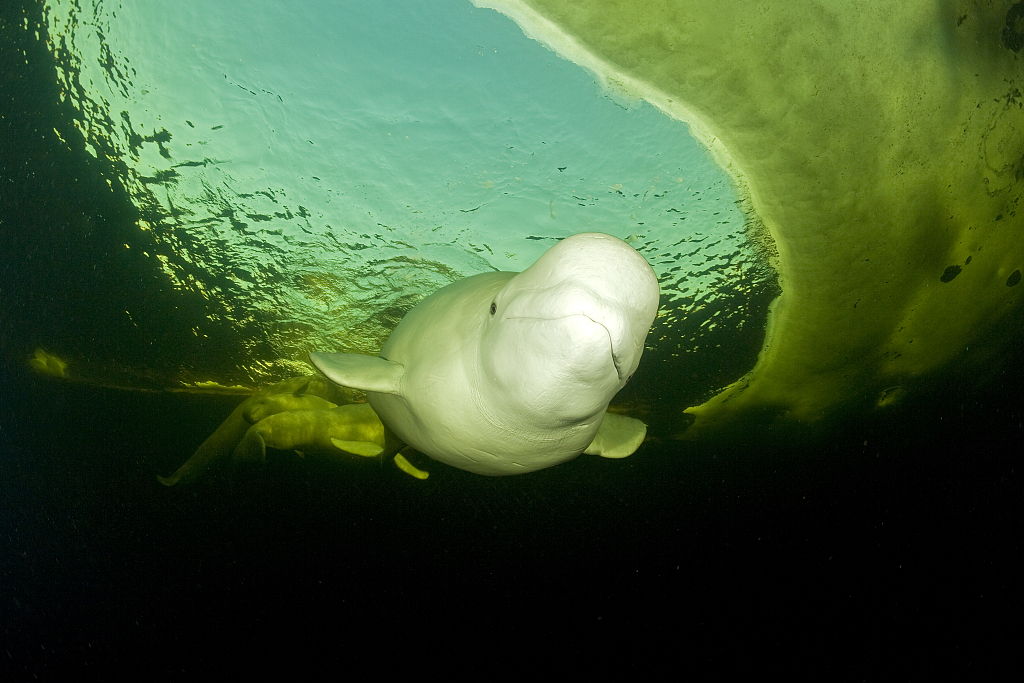
A Beluga whale is swimming under ice. /VCG Photo
Read More:
Russia to release killer whales in new habitat, despite expert advice
(Cover image via VCG.)
(If you want to contribute and have specific expertise, please contact us at nature@cgtn.com.)

Copyright © 2018 CGTN. Beijing ICP prepared NO.16065310-3
Copyright © 2018 CGTN. Beijing ICP prepared NO.16065310-3